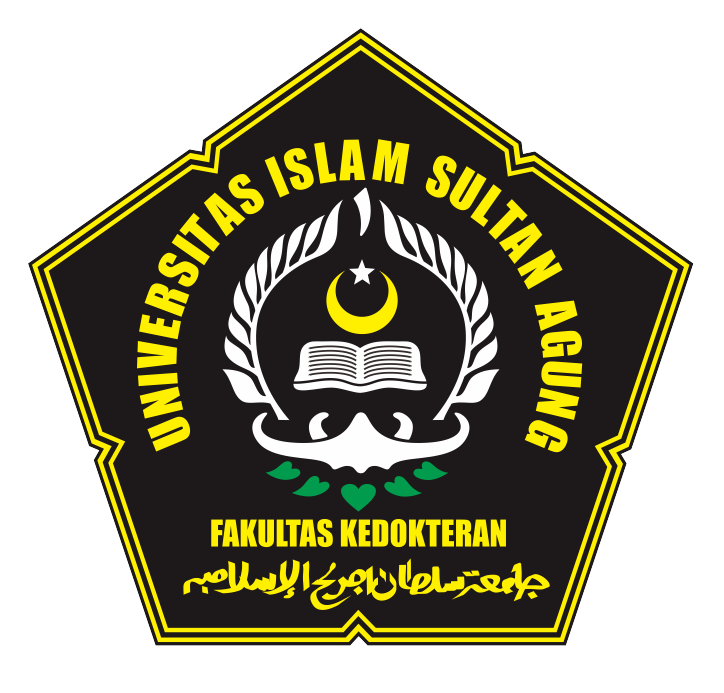Master of Biomedical Sciences, Medical Faculty, Sultan Agung Islamic University (UNISSULA) Semarang - Indonesia
Allium sativum, Hylocereus polyrhizus and its Combination Effectiveness on Lipid Profiles and Number of Foam Cells in Rats with Dyslipidemia
Allium Sativum, Hylocereus Polyrhizus And Its Combination Effectiveness On Lipid Profiles And Number Of Foam Cells In Rats With Dyslipidemia
Introduction: garlic extract (Allium sativum) and red dragon fruit extract (Hylocereus polyrhizus) have been used to improve lipid profile. Objective: to determine the effectiveness between garlic, red dragon extracts, and its combination on lipid profile and number of foam cells.
Methods: experimental study with a pre-test post-test control group design. Twenty five Wistar rats were divided into 5 groups: Group (Sim-G); Group II (BP-84), Group III (BN-84), Group IV (B P-BN), Group V (negative Control /Neg-G). All rats were fed a high cholesterol diet to induce dyslipidemia. On day 28, blood samples were taken for lipid profile evaluation. After termination, aortic blood vessels were subjected to foam cell evaluation.
Results: Post hoc test showed a significant decrease in total cholesterol, LDLc, Triglyceride and increase in HDLc in the treated groups compared to the negative control group (p<0.05. Mann Whitney test showed a significant differences in the number of foam cell in Sim-G, Gar-84, RD-84, dan Gar-RD compared to the Neg-G. There was a significant reduction in TC, LDLc, TG, and increase in HDLc in RD-84 compared to Gar-84 and Gar-RD. Foam cells number in Gar-RD insignificantly differ from Sim-G, p>0.05.
Conclusion: Red dragon fruit extract was more effective to lower lipid profiles compared to garlic extract. The combination of red dragon and garlic extract was more effective to reduce the number of foam cells compared to the extract of red dragon fruit and garlic extract alone.
Keywords: Garlic extract; red dragon fruit extract; lipid profile; foam cell.
- Bakar, J., Muhammad, K., Ee, S. chee, Dzulkifly, M.A., Noranizan, A., 2011. Physico- chemical characteristics of red pitaya (Hylocereuspolyrhizus) peel. J. Agric. Food Chem. 18, 279–286.
- Carotenuto, A., Fattorusso, E., Lanzotti, V., Magno, S., 1999. Spirostanol saponins of Allium porrumL. Phytochemistry 51, 1077–1082. https://doi.org/10.1016/S0031-9422(98)00712-2
- Dewi, A.I., 2016. Green Tea Extract (Camellia Sinensis) Improves Lipid Profile Better Than White Tea Extract (Camellia Sinensis) in Rats (Rattus Norvegicus) Wistar strain male with dyslipidemia.
- Gerner, R.R., Wieser, V., Moschen, A.R., Tilg, H., 2013. Metabolic inflammation: role of cytokines in the crosstalk between. Can. J. Physiol. Pharmacol. 872, 867–872.
- Gupta, N., Porter, T.D., 2001. Garlic and garlic-derived compounds inhibit human squalene monooxygenase. J. Nutr. 131, 1662–1667.
- Hadi, N.A., Mohamad, M., Rohin, M.A.K., Yusof, R.M., 2012. Consumption On Blood Glucose Level And. Borneo Sci. 31, 127–142.
- Karlsen, A., Retterstøl, L., Laake, P., Paur, I., Kjølsrud-Bøhn, S., Sandvik, L., Blomhoff, R., 2007. Anthocyanins Inhibit Nuclear Factor-Kappa Activation In Monocytes and Reduce Plasma Concentrations of Pro- Inflammatory Mediators In Healthy Adults. J. Nutr. 137, 1951–1954.
- Lee, Y.-M., Yoon, Y., Yoon, H., Park, H.-M., Song, S., Yeum, K.-J., 2017. Dietary Anthocyanins against Obesity and Inflammation. Nutrients 9, 1089. https://doi.org/10.3390/nu9101089
- Moore, K.J., Sheedy, F.J., Fisher, E.A., 2013. Macrophages in atherosclerosis: a dynamic balance. Nat. Publ. Gr. 13, 709–721. https://doi.org/10.1038/nri3520
- Pareek, S., Sagar, N.A., Sharma, S., Kumar, V., 2018. Fruit and Vegetable Phytochemicals: chemistry and Human Health, 2nd ed. 8 John Wiley & Sons Ltd.
- Qin, Y., Xia, M., Ma, J., Hao, Y., Liu, J., Mou, H., Cao, L., Ling, W., 2009. Anthocyanin Supplementation Improves Serum LDL- and HDLCholesterol Concentrations Associated with The Inhibition of Cholesteryl Ester Transfer Protein in Dyslipidemic Subject. Am. J. Clin. Nutr. 90, 485–49. https://doi.org/10.3945/ajcn.2009.27814
- Rose, P., Whiteman, M., Moore, K., Zhun, Y., Rose, P., Whiteman, M., 2005. Allium: the chemistry of potential therapeutic agents. Nat Prod Rep 22, 351–368.
- Salehi, I., Vahidinia, A., Bakhtiari, A., Mohammadi, P., Sukumaran, A., Hosseini-Zijoud, S.-M., 2015. Innovare Academic Sciences The Effect Of Fresh Garlic On The Lipid Profile And Atherosclerosis Development In Male Rats Fed With A High Ghee Diet. Int. J. Pharm. Pharm. Sci. 7, 486–490.
- Shabani, E., Sayemiri, K., Mohammadpour, M., 2019. The effect of garlic on lipid profile and glucose parameters in diabetic patients: A systematic review and meta-analysis. Prim. Care Diabetes 1, 28–42. https://doi.org/10.1016/j.pcd.2018.07.007
- Sun, Y., Wang, W., Qin, J., 2018. Anti-hyperlipidemia of garlic by reducing the level of total cholesterol and low-density lipoprotein. Medicine (Baltimore). 97, 18.
- Tabas, I., Bornfeldt, K.E., 2016. Macrophage Phenotype and Function in Different Stages of Atherosclerosis. Circ. Res. 118, 653–667. https://Doi.Org/10.1161/Circresaha.115.306256
- Werdiningsih, W., Suhartati, 2018. Effects Of Red Pitaya (Hylocereus Polyrhizus) On Lipid Profile Of Male White Rats (Rattus Norvegicus) Receiving High Fat Diet. Folia Medica Indones. 54, 16–21.
- Xia, M., Hou, M., Zhu, H., Ma, J., Tang, Z., Wang, Q., Li, Y., Chi, D., Yu, X., Zhao, T., Han, P., Xia, X., Ling, W., 2005. Anthocyanins Induce Cholesterol Efflux from Mouse Peritoneal Macrophages. J. Biol. Chem. 280, 36792–36801. https://doi.org/10.1074/jbc.M505047200
- Yu, X., Fu, Y., Zhang, D., Yin, K., Tang, C., 2013. Foam cells in atherosclerosis. Clin. Chim. Acta 424, 245–252. https://doi.org/10.1016/j.cca.2013.06.006
 Copyright (c) 2020 Sains Medika: Jurnal Kedokteran dan Kesehatan
Copyright (c) 2020 Sains Medika: Jurnal Kedokteran dan Kesehatan

This work is licensed under a Creative Commons Attribution 4.0 International License.
